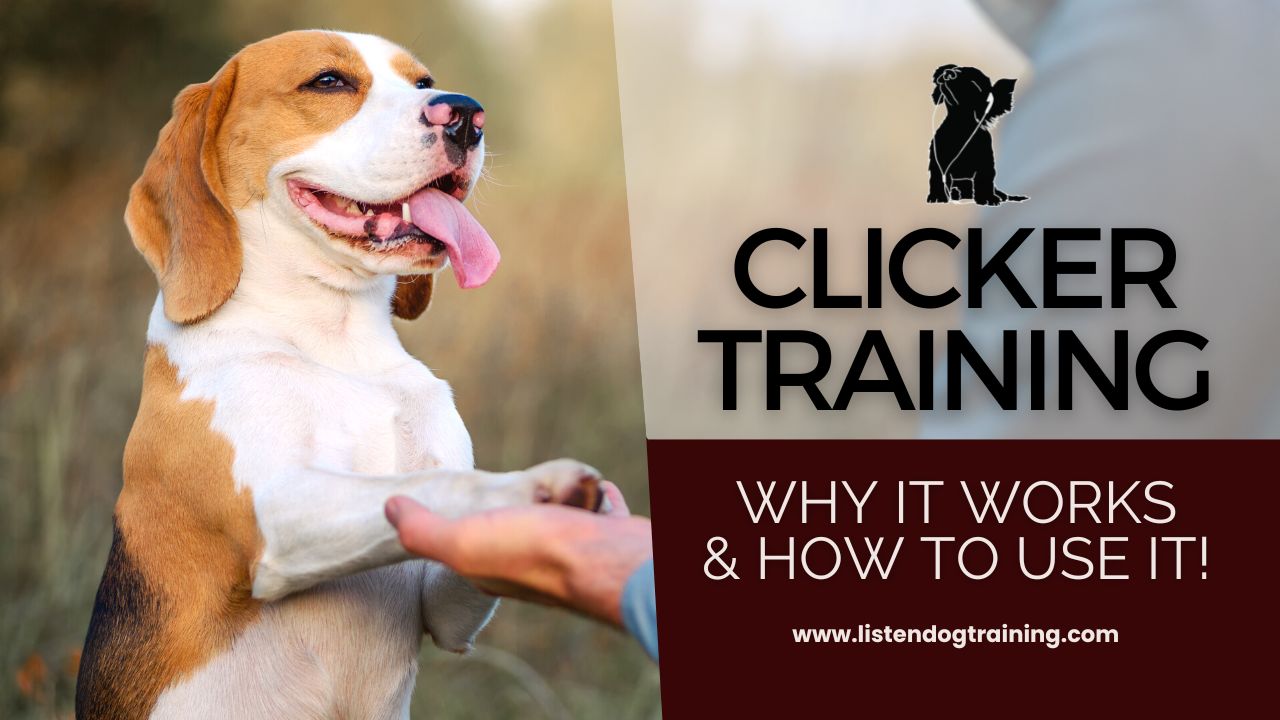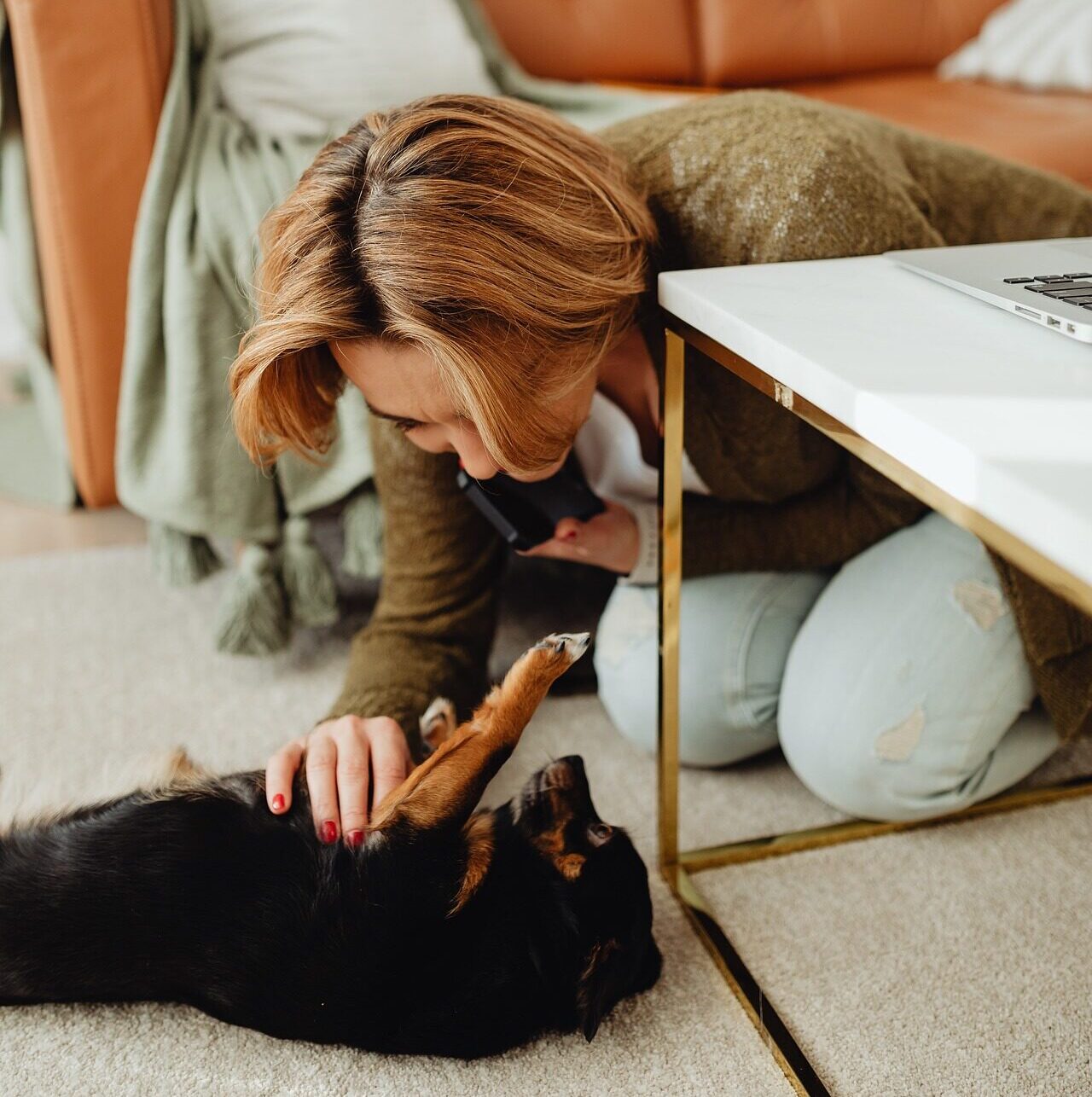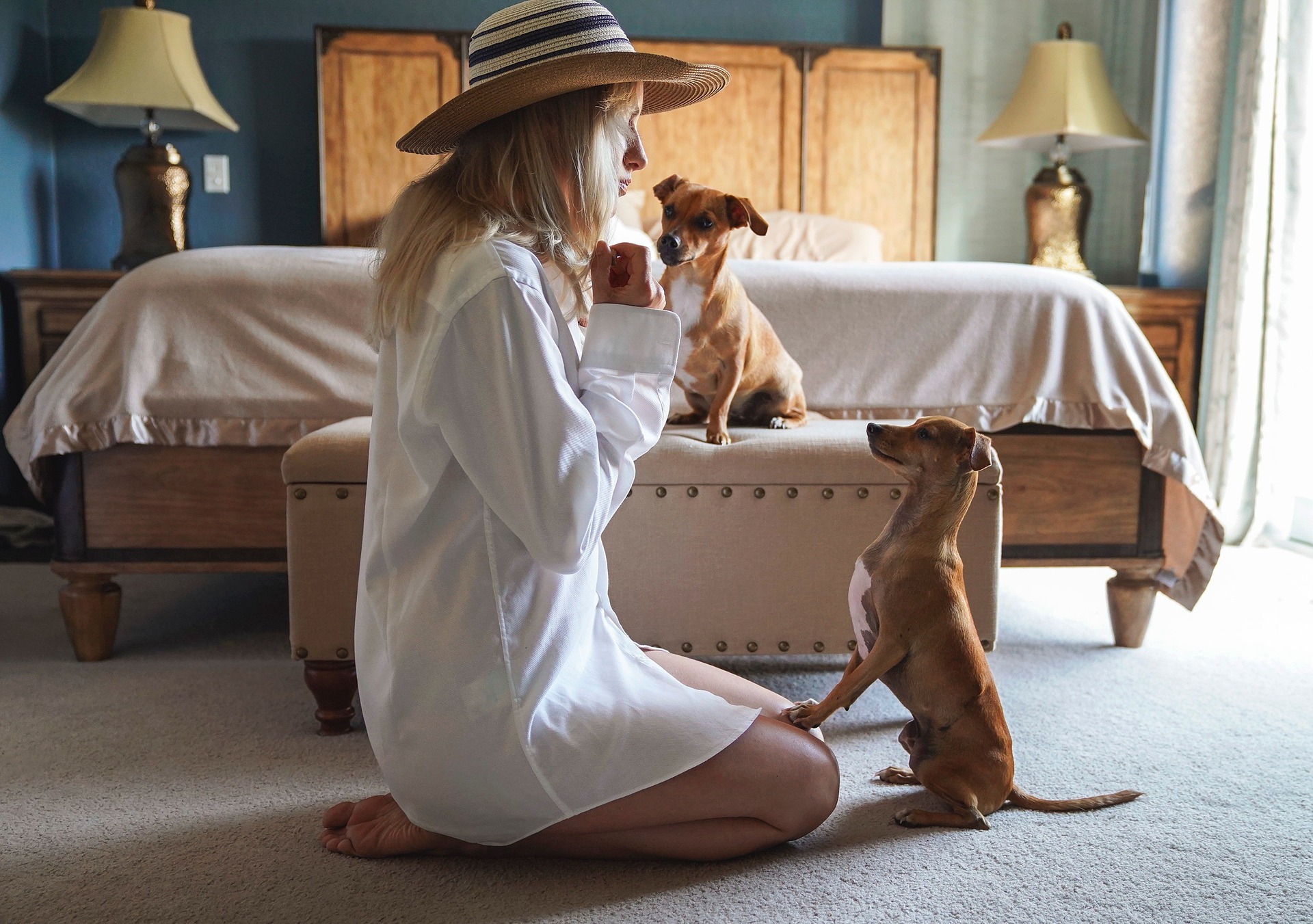Dog Training With a Clicker: Your Shortcut To Awesome Results!

You’ve heard about training your dog with a clicker… but you’ve no idea how that little click-click device is going to make your dog training any easier, quicker or more successful? Then you’re in the right place! In this article I’ll explain the science behind clicker training and reveal how you can introduce clicker training to your own dog, with awesome results…
How Does Clicker Training Work?
Forget Schrödinger’s cat (the poor thing) in order to understand the science behind clicker training, we need to take a look at Pavlov’s dogs. Ivan Pavlov was a Russian physiologist, who, in the early 20th century, discovered that he was able to cause dogs to drool by ringing a bell – even in the absence of food – if he paired that bell with the presentation of food enough times beforehand. This is a process we now know today as classical conditioning.
What is Classical Conditioning?
Classical conditioning begins with an unconditioned stimulus that produces an unconditioned response. This means that something in the environment triggers a natural physiological response in an animal, not one that is learned or trained. Examples include the smell of food causing the sensation of hunger, a loud noise causing you to jump, or the sour taste of lemon causing you to grimace. You have not been taught that it is rewarding to get hungry, or startle, or grimace – the response is simply inherent.
What Pavlov discovered, was that if we take those unconditioned stimuli – the food, the loud noise or the sour lemon flavour – and pair them with another neutral stimulus, like a bell, a word or a clicker, we can eventually condition this stimulus to produce the same response.
Pavlov noted first that the dogs would drool when presented with food. He then took a bell (unconditioned stimulus) and rang it before the dogs were presented with food, repeatedly and consistently. Eventually, Pavlov was able to illicit the dogs’ unconditioned response to food without presenting them with food at all, simply by ringing the bell. The bell was now a conditioned stimulus, and the drooling had become the conditioned response.
So what has all that got to do with clicker training? Well, you know that your dog enjoys a tasty treat. And if you can take that joy, and pair it with the sound of a clicker, the same way that Pavlov paired it with the sound of a bell, your dog will eventually come to associate the clicker, with the concept of being rewarded.
But Why Bother Training a Dog With a Clicker When We Can Just Use Treats?
Ok, to understand the value the clicker adds to the equation, we now need to take a quick look at operant conditioning. This is where a voluntary action is paired with a consequence, and is basically the underlying principle behind all traditional dog training methods. An example would be a dog who sits, and is given a treat. He is more likely to sit again, because the action was rewarded.
The problem with simply relying on rewarding the dog with food or a toy, is that it can actually leave a lot of room for misinterpretation from your dog…
Let’s say we are training a dog to sit on cue. When you begin your first training session, your dog has no idea what your end goal is. Maybe you get lucky and their bottom hits the floor, maybe you have to wait a while, maybe you need to lure them into position. Once they finally sit – great! You need to reward that. But as you reach into your pocket, your dog’s got excited about what’s coming and his bottom is already off the floor, his paws are on you, and he’s excited to eat the treat. Now you’ve got it out of your pocket, you gladly let him take it, and tell him he’s a good boy.
What have you rewarded?
You think you’ve rewarded the fact your dog finally performed a ‘sit’! But from your dog’s perspective, he hung out with you and did all kinds of things… he licked your hand, performed an excited play bow, barked once, sat down, stood up, came towards you and licked your hand again. Then he ate a treat. Which behaviour earned him the reward?
Probably walking towards you and licking your hand, because that’s when the treat was finally relinquished! So you ask for a sit again, and his immediate first response might well be to put his paws on you and lick you. When this doesn’t work, he might be a little confused, but he’ll try a few other behaviours and probably eventually land on a sit again.
But this process of uncertainty and mixed messaging from your dog’s perspective can make learning new cues more difficult, frustrating and time-consuming.
What if there was a way we could mark the exact behaviour that we are rewarding in a fraction of a second, every time it is performed so that your dog knows exactly what earns him the good stuff, and exactly what to repeat next time?
Enter the clicker.
Whilst it can take seconds to deliver a treat to your dog’s mouth (in which time he might have offered a number of super quick behaviours that you don’t want to reward at all!) a ‘click’ can be delivered instantly, making the association between behaviour and reward indisputable for your dog. Not only does this make training more enjoyable and less frustrating for both you and your dog, but it means you’ll see results much quicker too!

How To Introduce Clicker Training
So, in order to introduce the magic of clicker training to your own dog training regimen, you’ll first need to ‘charge the clicker’. This is a very easy process: you simply need to channel your inner Pavlov, and pair the clicker with the reward. How? Click the clicker, then deliver a treat. Click the clicker again, then deliver another treat. Click it again, and… you get the idea.
Click, treat, click, treat, click, treat.
It’s simply another version of Pavlov’s bell. In no time at all, when your dog hears that click, they’re going to experience all the excitement and anticipation they do when they know a treat is coming… because they now know a treat is coming.
Once your clicker is charged, it’s ready to introduce to an actual training session! When first using your clicker in training, use it to reward cues and behaviours your dog is familiar with. Over time, once the association and understanding is strong, your clicker will be the training assistant you wish you’d discovered years ago!
Top Tips For Clicker Training Success
You Don’t Need A Clicker
Throughout this article I’ve referred to a clicker, but the reality is, you can use any marker. You can make a sound with your mouth, or use a marker word like ‘yes’ or ‘nice.’ The reason a clicker is so often used, is because it’s not a word, phrase or sound the dog is likely to hear in any other scenario, so there can be absolutely no confusion caused. If you choose to use a marker word, be sure to pick a word you’re not going to use in any other scenarios with your dog. for example, don’t use the phrase ‘good boy’ as a marker word for your dog, if later on that evening you’re going to curl up on the sofa beside him and tell him he’s a ‘good boy’ repeatedly without ever delivering a treat… because your marker will become worthless.
The Clicker Is Not The Reward – It’s The Explanation
Some people can get a little confused and believe that simply the click itself becomes the reward, and means you no longer need to deliver the reward that you paired with it, and the reward your dog actually enjoys (e.g. the food or the toy or the play). This isn’t the case. Think of the clicker more as an explanation or clarifier. It’s your way of saying ‘ this is the exact choice or behaviour I am rewarding you for – I’m not paying you for anything else you did. Know that when the payment comes, it’s because your bottom hit the floor, not because you barked, or bowed or licked me.’ (Because if you’ve ever trained an excitable dog, you’ll know they can offer all of these behaviours plus at least three more all within seconds, when they want to!)
Timing Is Everything
With the above in mind, remember that timing is key here, so have your wits about you during a clicker training session! You may need to be super quick at the beginning to mark the appropriate behaviour before an inappropriate behaviour is chosen. A great example of this is when teaching dogs not to bark when someone is at the front door. when the doorbell rings, you are likely to be presented with a split second of silence whilst your dog processes what’s happened. You can click now, and mark the fact that staying silent when the doorbell rings has earned him a reward, or – if you click one second later – you’re likely to end up marking the bark itself, and losing the opportunity to communicate what you do want, to your dog.
Some Dogs Don’t Like Clickers
Some dogs can become obsessed with the clicker itself, fixating on it during training sessions, the way they do when food treats are visible. To prevent this, you can use the clicker behind your back, or keep it in your pocket. Some dogs may even find the noise scary or startling at first; with some this can be overcome, but if you do notice that the sound of the clicker is causing repeated stress responses in your dog, consider using something else as a marker. If the click is viewed as punishing, it’s never going to help you achieve training success!
Keep The Clicker Associated With The Reward
At the beginning of your clicker training, a click must always be followed by a reward. Over time, you will be able to string clicks together without the need for repeated follow-up rewards, which is great for chaining behaviours. For example, you might ask your dog to sit (click) then stand (click) then bow (click) then spin (click) THEN deliver a treat or two, or an exciting game of tug. But always be aware that the clicker mustn’t lose its magic!
Plan For Success
If you’re super excited to get started with clicker training and want to support your dog training adventure with one of our dog training planners, you can view the range here. Packed with info, games and exercises to help you tackle problem behaviours, master trick training, grow your dog’s obedience and more, these dog training planners, trackers and diaries are also filled with pages dedicated to planning and recording training sessions, setting goals, reviewing progress, tracking your dog’s health, fitness and learning progress, and more.
The dog nerd in me created them for the dog nerd in you… check them out and discover the planner for you!
Alternatively, if you’ve never considered getting this serious about your dog training before, but think it might be kind of fun to have a go, then why not grab yourself three of my favourite sheets for free? Designed to help you boost your relationship with your dog, log and review all the training games you’re playing (need ideas? find them here!) and keep track of ditching the bowl, these sheets are all you need to get your transformational dog training journey started!
Want to kickstart your dog training journey with a plan for success? Subscribe to receive three of my favourite printable planners – available to buy on my website – for FREE!
Got any questions? Come find me on Insta or TikTok and drop me a message – always happy to chat dog training!





